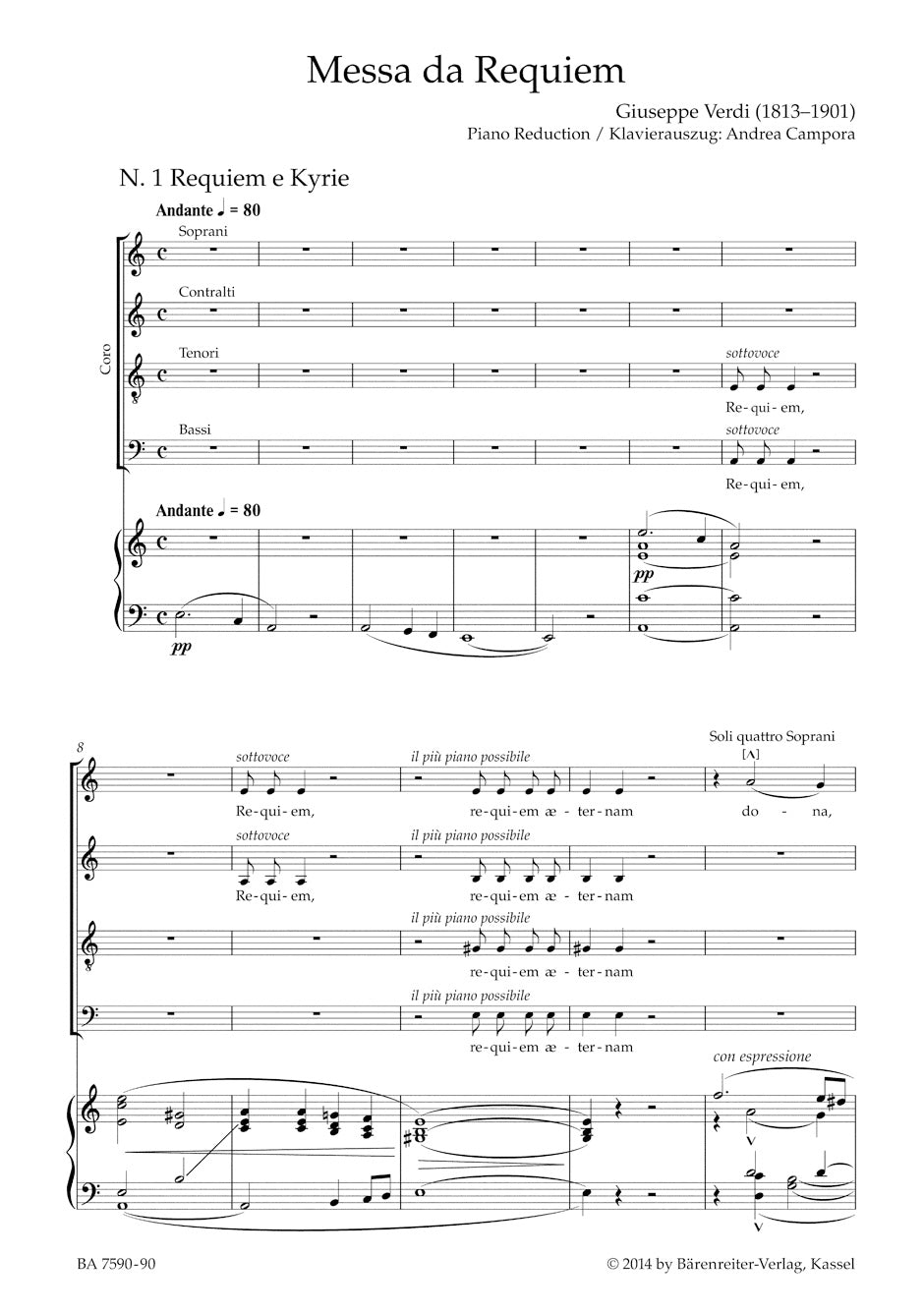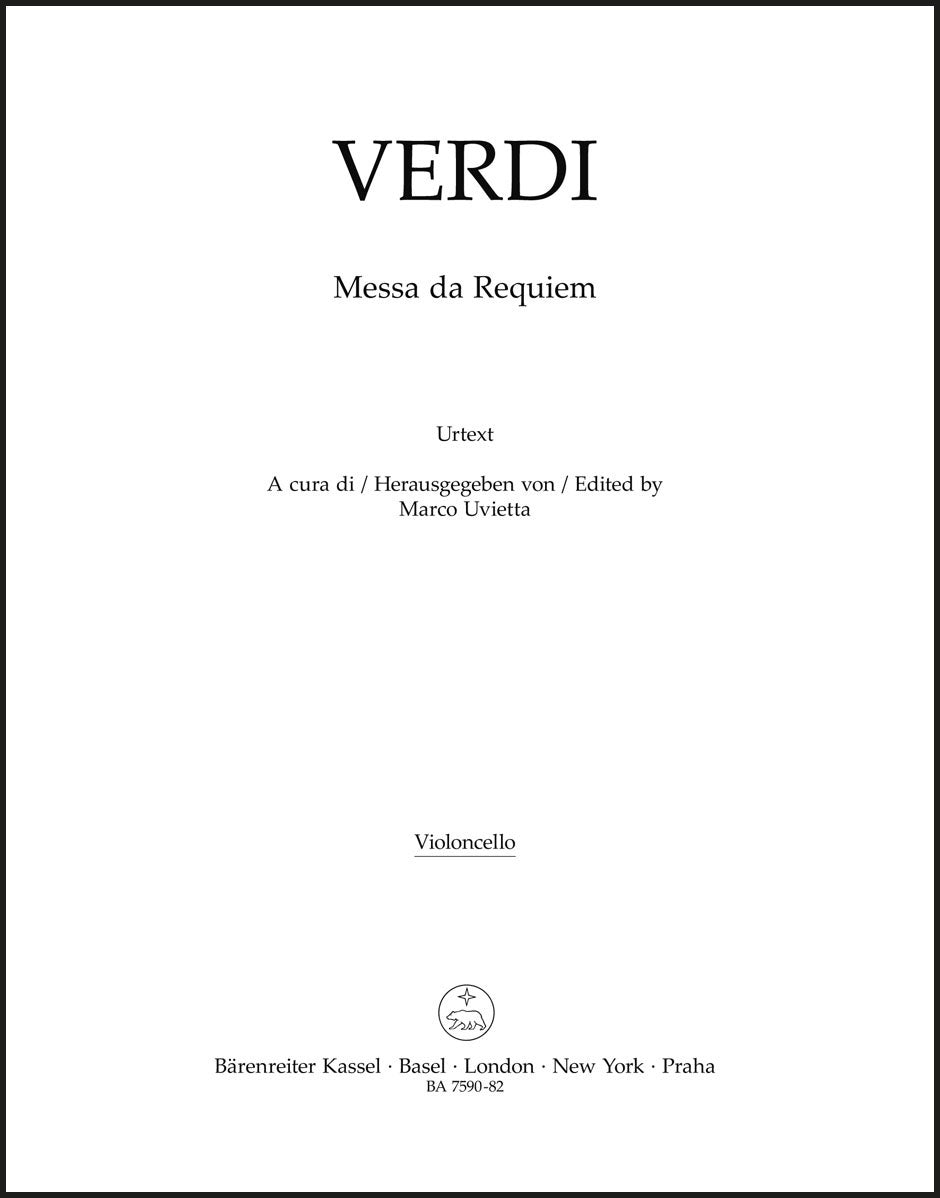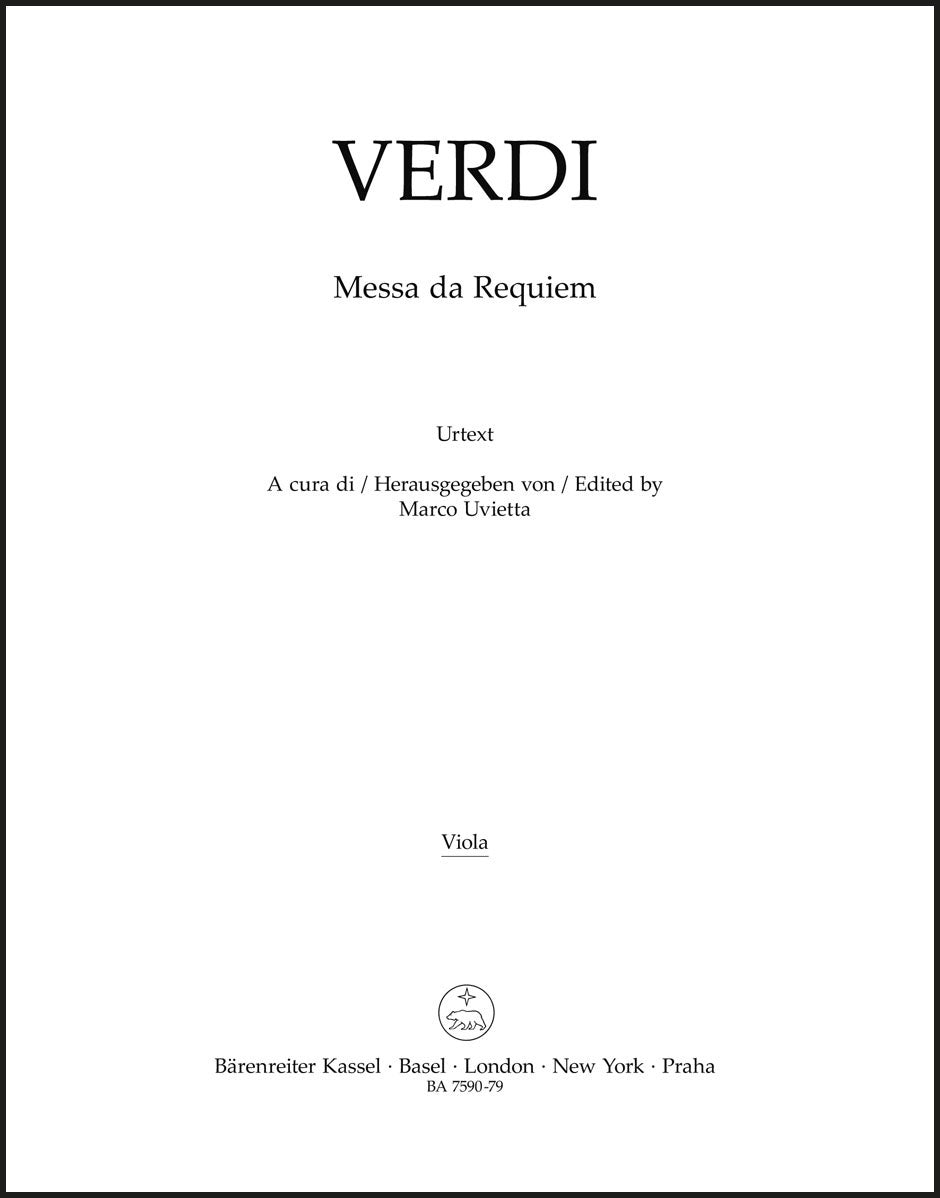Verdi: Messa da Requiem
In stock and typically ships within 1 business day.
- Composer: Giuseppe Verdi (1813-1901)
- Editor: Marco Uvietta
- Instrumentation: SATB Choir, Orchestra
- Work: Messa da Requiem
- Work Language: Latin
- ISMN:
- Size: 7.5 x 10.6 inches
- Pages: 154
- Urtext / Critical Edition
Description
In spite of the most enthusiastic reception at the work's premiere, the famous pianist and conductor Hans von Bülow criticized Verdi's Messa da Requiem as "an opera in ecclesiastical robes". Nonetheless, or maybe precisely for this quality, the work has conquered concert podiums worldwide.
For this scholarly-critical edition, the editor has consulted no less than 16 sources, many more than were ever used for any other edition of the Requiem; some of these sources were never evaluated before and one source, a hand-written vocal score, particularly relevant to the evaluation of the "Liber scriptus", was newly discovered.
As such, this edition offers new philological and editorial decisions regarding phrasing, articulation and dynamics and succeeds in presenting practical suggestions to solve musical problems and those concerning the interpretation of this famous work.
This edition comprises a concise Critical Commentary in the score. The most important editions published in the 19th century are compared with regard to musicological questions in the work. The genesis of some misunderstandings included in the 1913 and 1964 Ricordi editions is traced. The first version of the "Liber scriptus" for chorus is included in the appendix while the later version for mezzosoprano solo is to be found in the main part of the edition.
Publishers use a lot of words to describe what they sell, and we know it can be confusing. We've tried to be as clear as possible to make sure you get exactly what you are looking for. Below are descriptions of the terms that we use to describe the various formats that music often comes in.
Choral Score
A score for vocalists that only contains the vocal lines. The instrumental parts are not there for reference. Generally, cheaper than a vocal score and requires multiple copies for purchase.
Facsimile
Reproductions of the original hand-written scores from the composer.
Full Score
For ensemble music, this indicates that the edition contains all parts on a single system (there are not separate parts for each player). In larger ensembles, this is for the conductor.
Hardcover
Hardbound. Generally either linen-covered or half-leather.
Orchestral Parts
Similar to a wind set, this is a collection of parts. In the case of strings, the numbers listed are the number of copies included, though generally these are available individually (often with minimum quantities required).
Paperback
When publishers offer multiple bindings (e.g. hardcover) or study scores, this is the "standard" version. If you're planning to play the music, this is probably what you want.
Performance / Playing Score
A score of the music containing all parts on one system, intended for players to share. There are not separate parts for each player.
Set of Parts
For ensemble music, this indicates that there are separate individual parts for each player.
Solo Part with Piano Reduction
For solo pieces with orchestra, this is a version that contains a piano reduction of the orchestra parts. For piano pieces, two copies are typically needed for performance.
Study Score
A small (think choral size) copy of the complete score meant for studying, and not playing. They make great add-ons when learning concertos and small chamber works.
Vocal Score
A score prepared for vocalists that includes the piano/organ part or a reduction of the instrumental parts.
Wind Set
For orchestral music, this is a collection of wind and percussion parts. The specific quantities of each instrument are notated.
With Audio
In addition to the printed music, the edition contains recordings of the pieces. This may be an included CD, or access to files on the internet.
With / Without Fingering (Markings)
Some publishers prepare two copies - a pure Urtext edition that includes no fingering (or bowing) suggestions and a lightly edited version that includes a minimal number of editorial markings.













